From Slouching To Standing Tall: The Power Of Yoga For A Perfect Posture
In our digital age, poor posture has become a silent epidemic impacting millions, from young children glued to screens to adults working long hours at desks. Alarmingly, studies reveal that over 80% of the population will experience back pain at some point in their lives. The root cause often lies in poor posture—a habitual problem that has escalated due to our increasingly sedentary lifestyle. Yet, the effects of poor posture go beyond back pain. They seep into our respiratory health, mental clarity, energy levels, and overall mood, affecting the quality of our lives in ways we often overlook.
But hope is not lost.
Yoga, with its ancient wisdom, offers a pathway not only to correct postural issues but to revitalize our health, enhance our mental resilience, and allow us to age gracefully.

Understanding the Anatomy of Poor Posture: How It Alters Our Bodies Over Time
Posture isn’t just about how we look; it’s about how our body functions as a whole. The human spine, with its natural curves, is designed to distribute weight evenly, protecting internal organs, facilitating mobility, and acting as the body’s central support structure. However, when we adopt poor postural habits—like slouching or leaning forward—these natural curves become exaggerated or flattened, leading to cascading physical issues.
1. Muscle Imbalances and Structural Misalignment
- Forward Head Posture: Often caused by prolonged screen time, forward head posture is where the head juts forward, adding stress to the neck and upper spine. For every inch the head shifts forward, it adds up to 10 pounds of extra strain on neck muscles. Over time, this leads to shortened neck muscles, tightness, and neck pain.
- Rounded Shoulders and Chest Tightness: Slouching tightens the pectoral (chest) muscles, pulling the shoulders forward and weakening the upper back. This imbalance limits arm mobility, increases the likelihood of shoulder injuries, and restricts lung capacity.
- Tilted Pelvis and Lower Back Strain: When we sit for long periods, the hip flexors shorten, tilting the pelvis forward. This anterior pelvic tilt places strain on the lower back and leads to a swayback, increasing the risk of lumbar pain and creating an unbalanced gait.
2. Spinal Disc Compression and Degeneration
The spine is composed of intervertebral discs that act as shock absorbers, cushioning each vertebra. However, when we sit with poor posture, these discs compress and bear uneven loads.
Over time, this compression can cause:
- Disc Degeneration: As the discs lose fluid due to sustained pressure, they become less resilient, increasing the risk of herniated discs or “slipped discs.”
- Reduced Flexibility: Stiff muscles and compressed joints reduce our range of motion, making daily activities like bending or twisting more challenging.
- Early Onset of Arthritis: Misalignment and repetitive strain can contribute to early wear-and-tear on the joints, potentially leading to osteoarthritis, a common yet often painful degenerative joint disease.
Prolonged Sitting: Compounding the Problem
The combination of poor posture and prolonged sitting compounds the stress on our bodies. Our spines are designed to support active movement, not prolonged slouching over screens or desks. Holding poor postural positions over extended periods leads to strain on muscles, ligaments, and the spine itself.
Even a slight forward head tilt can add an additional 27 pounds of pressure to the spine, while a 60-degree tilt can add up to 60 pounds. This sustained strain often results in musculoskeletal issues like kyphosis, lordosis, herniated discs, and cervical spondylitis.
Why Posture Matters: Understanding the Impacts

Sitting has become a way of life, but it comes at a cost. According to research published in JAMA (Journal of the American Medical Association), adults in the United States spend over six hours a day sitting on average. Most of the time, we’re not sitting correctly. A slouched posture—rounded shoulders, a forward head tilt, and a curved back—places excessive stress on the spine, leading to:
- Cervical Spondylosis: A degenerative condition of the cervical spine, now common even among young professionals due to excessive computer use.
- Slipped Discs: Poor posture can contribute to herniated discs, where the cushioning between vertebrae is displaced, causing severe pain.
- Kyphosis: Also known as “hunchback,” this condition results from excessive forward curvature of the upper spine due to years of slouching.
- Lordosis: An excessive inward curve of the lumbar spine, often due to weak core muscles and improper sitting posture.
- Scoliosis: A sideways curvature of the spine that can be worsened by poor posture, though it often has genetic roots.
These conditions go beyond mere back pain—they compromise essential body functions. Poor posture restricts lung capacity, making deep breaths difficult and reducing oxygen levels in the bloodstream, leading to fatigue. A compromised posture also hinders digestion, as a compressed abdomen restricts the space for digestive organs to function optimally.
The Science of Breathing and Posture: How Poor Posture Limits Oxygen Intake
An often-overlooked impact of poor posture is its effect on breathing. Proper breathing requires the full expansion and contraction of the lungs, which relies on ample space within the chest cavity. Slouching compresses this cavity, preventing the diaphragm from fully descending. This restriction means we take in less oxygen per breath, leading to:
- Chronic Fatigue: Oxygen is essential for cellular energy production. Reduced oxygen intake can leave us feeling chronically fatigued, impacting productivity, mental clarity, and even our mood.
- Shallow Breathing and Anxiety: Poor posture can lead to a habit of shallow, rapid breathing, which triggers the body’s stress response, increasing cortisol levels and heightening anxiety. Conversely, an upright posture encourages deeper, diaphragmatic breathing, which promotes calm and relaxation.
- Impact on Heart Health: Compromised breathing can affect circulation and put stress on the cardiovascular system, indirectly impacting heart health over time.
Mental Health and Posture: The Psychological Impact of Standing Tall
Posture doesn’t just affect our physical health; it impacts our mental health too. There’s a growing body of research showing that the way we hold ourselves directly influences our mood and mindset. For instance:
- Increased Confidence and Reduced Anxiety: Studies have shown that maintaining an upright posture can boost confidence, reduce self-doubt, and even lower stress levels. This phenomenon, known as the “power pose effect,” suggests that standing tall sends signals to the brain that promote a sense of control and calm.
- Improved Mood and Reduced Depression: A study published in Health Psychology found that people who sat in a slouched posture reported feeling more depressed, less energetic, and more fearful than those who maintained an upright posture. Over time, improving posture can lead to a positive feedback loop, where physical alignment enhances mood and mental clarity.
Yoga as the Solution: How Yoga Rebuilds and Realigns the Body
Yoga offers a holistic approach to counteracting the effects of poor posture. Unlike other forms of exercise, yoga combines stretching, strengthening, and mindfulness, making it uniquely suited to address the physical and psychological toll of poor posture.
1. Core and Back Strengthening
Many yoga poses—such as Plank Pose, Cobra Pose, and Boat Pose—engage and strengthen the core muscles that support the spine. A strong core reduces the strain on spinal discs, prevents lower back pain, and encourages good posture throughout the day.
2. Enhanced Flexibility and Joint Health
Yoga’s focus on flexibility helps release tension from chronically tight muscles, particularly in the chest, shoulders, and hips. By lengthening these muscles, poses like Warrior II and Downward Dog allow the body to return to its natural alignment and relieve built-up stress from prolonged sitting.
3. Improved Mind-Body Awareness
Yoga encourages mindfulness, teaching us to notice how we hold our bodies and how posture affects our breathing and mood. As we cultivate this awareness, we become more conscious of our posture outside of class, leading to long-term improvements in alignment and health.
4. Nervous System Balance and Reduced Stress
Yoga breathing exercises (pranayama) encourage a “rest-and-digest” state, countering the “fight-or-flight” stress response triggered by poor posture. This shift reduces cortisol levels, enhances relaxation, and promotes emotional resilience.
Recommended Yoga Poses to Correct and Improve Posture
These yoga poses specifically target muscles and postural habits that contribute to poor alignment, offering a pathway to improved strength, flexibility, and balance:
Tadasana (Mountain Pose)
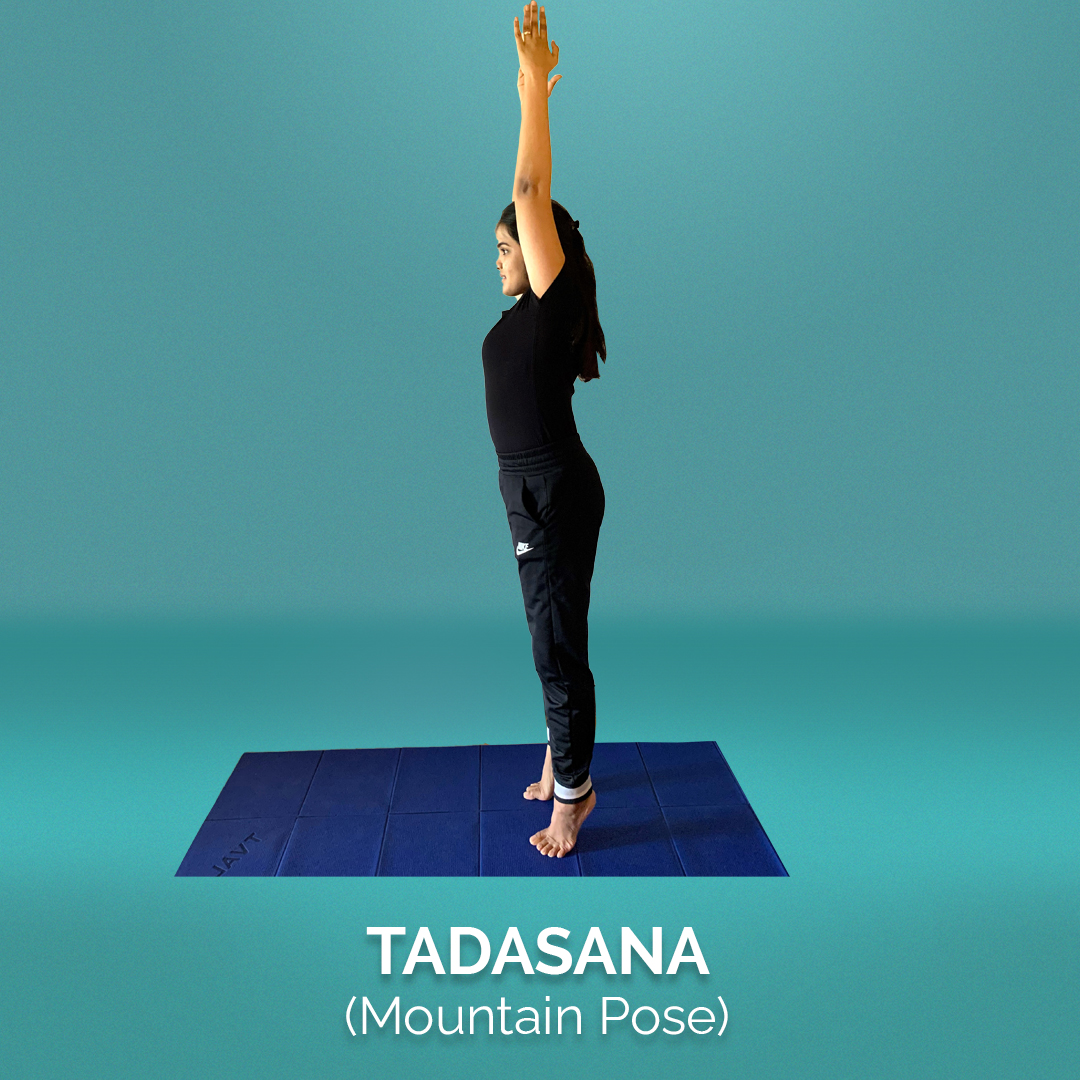
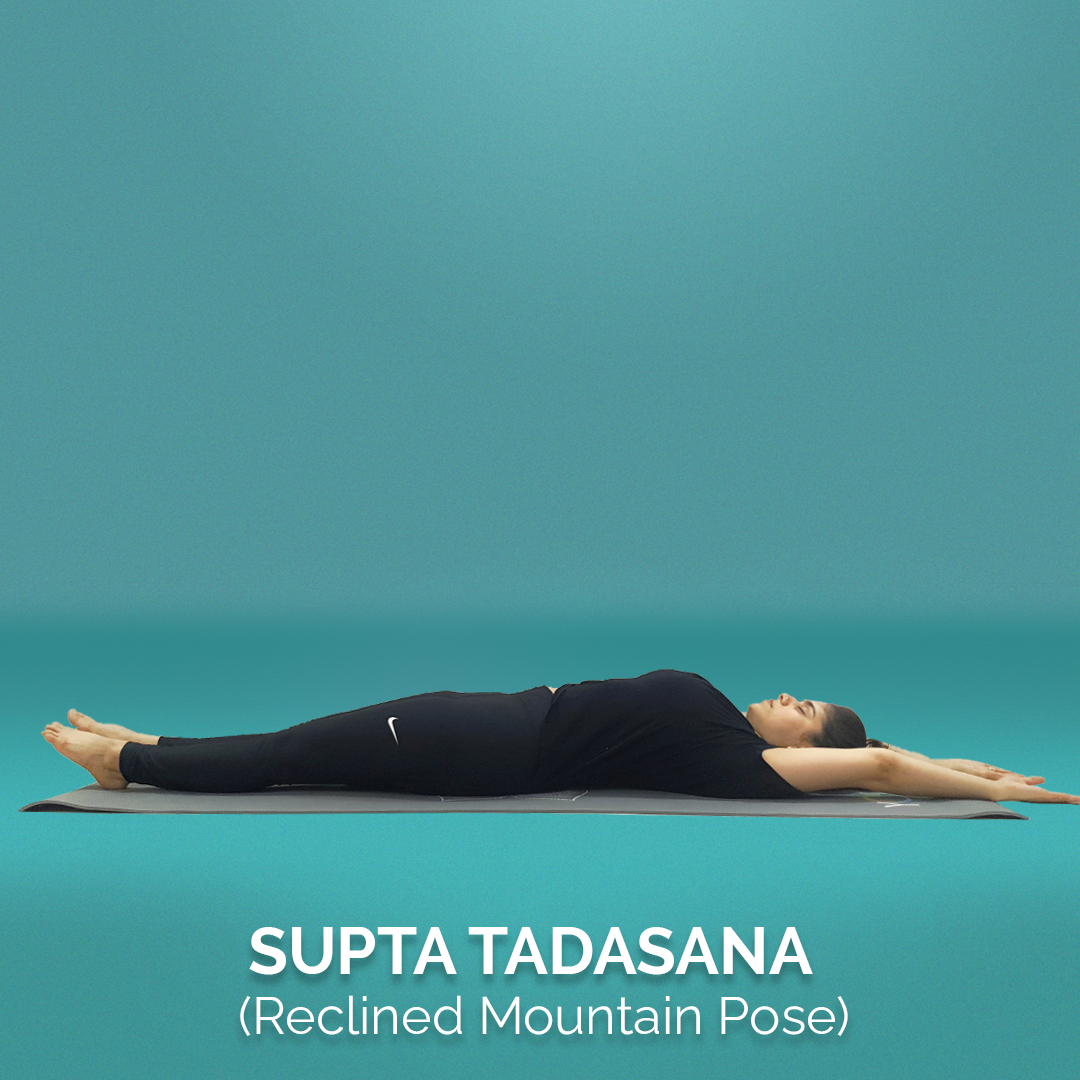
Builds awareness of posture by aligning the body from head to toe, encouraging the spine’s natural curves and building the foundational strength needed for other poses.
Bhujangasana (Cobra Pose)
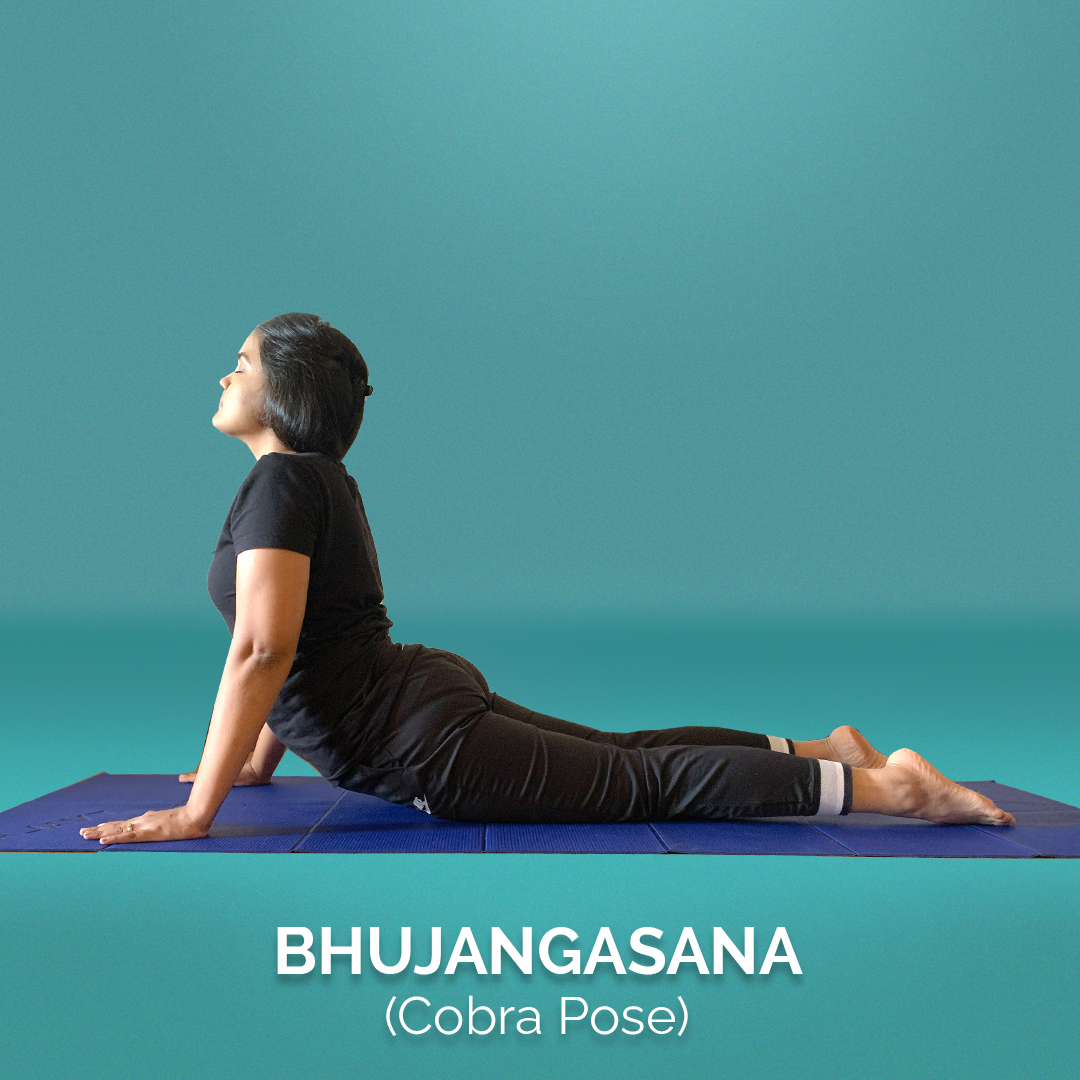
Strengthens the muscles along the spine, counters slouching, and opens the chest, improving both posture and lung capacity.
Adho Mukha Svanasana (Downward Dog)
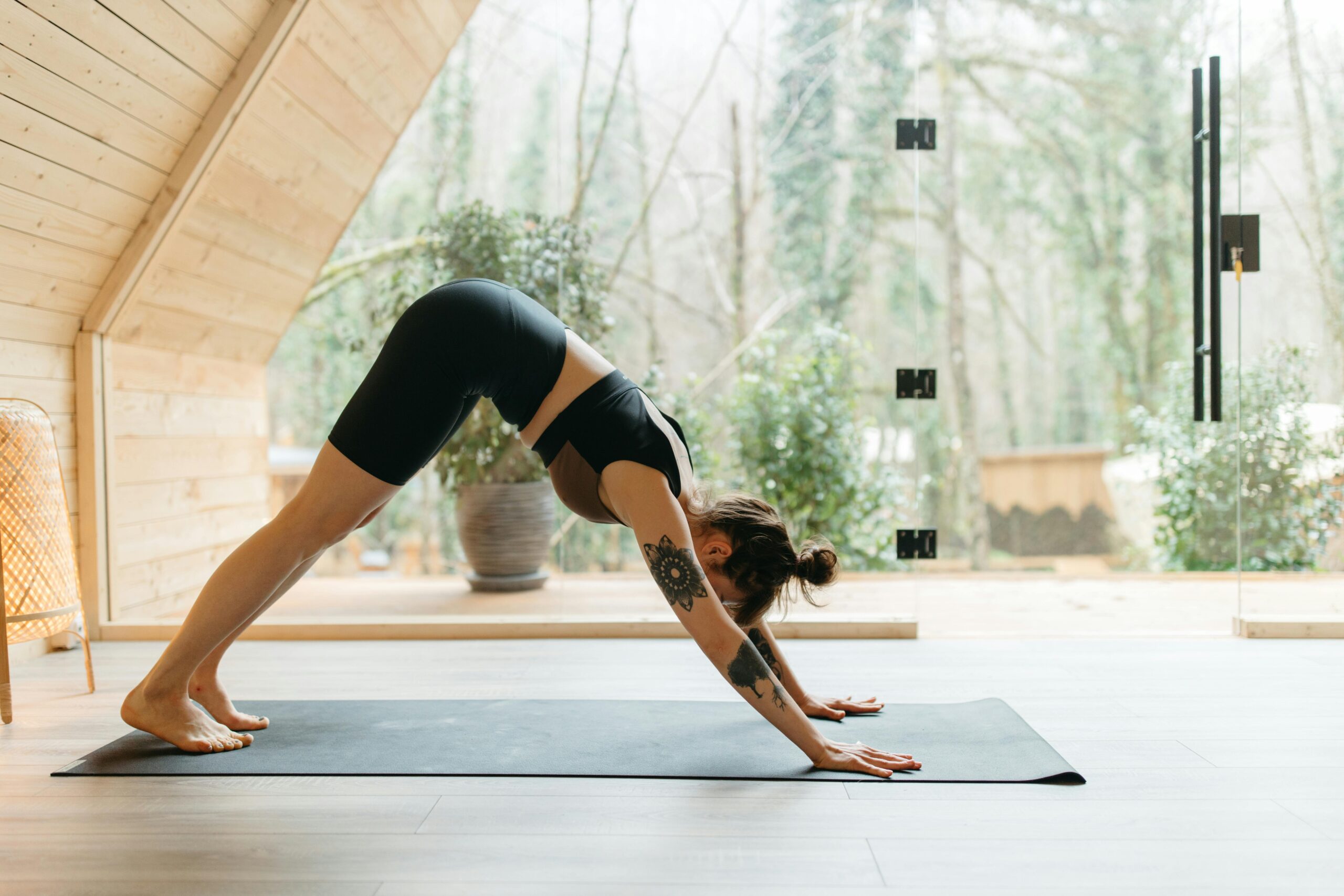
A full-body stretch that lengthens the spine, strengthens the shoulders, and opens the hamstrings and calves, helping alleviate tension caused by sitting.
Virabhadrasana II (Warrior II)

Engages the lower body and core, helping to stabilize the pelvis and align the shoulders, countering the effects of forward head posture.
Ustrasana (Camel Pose)
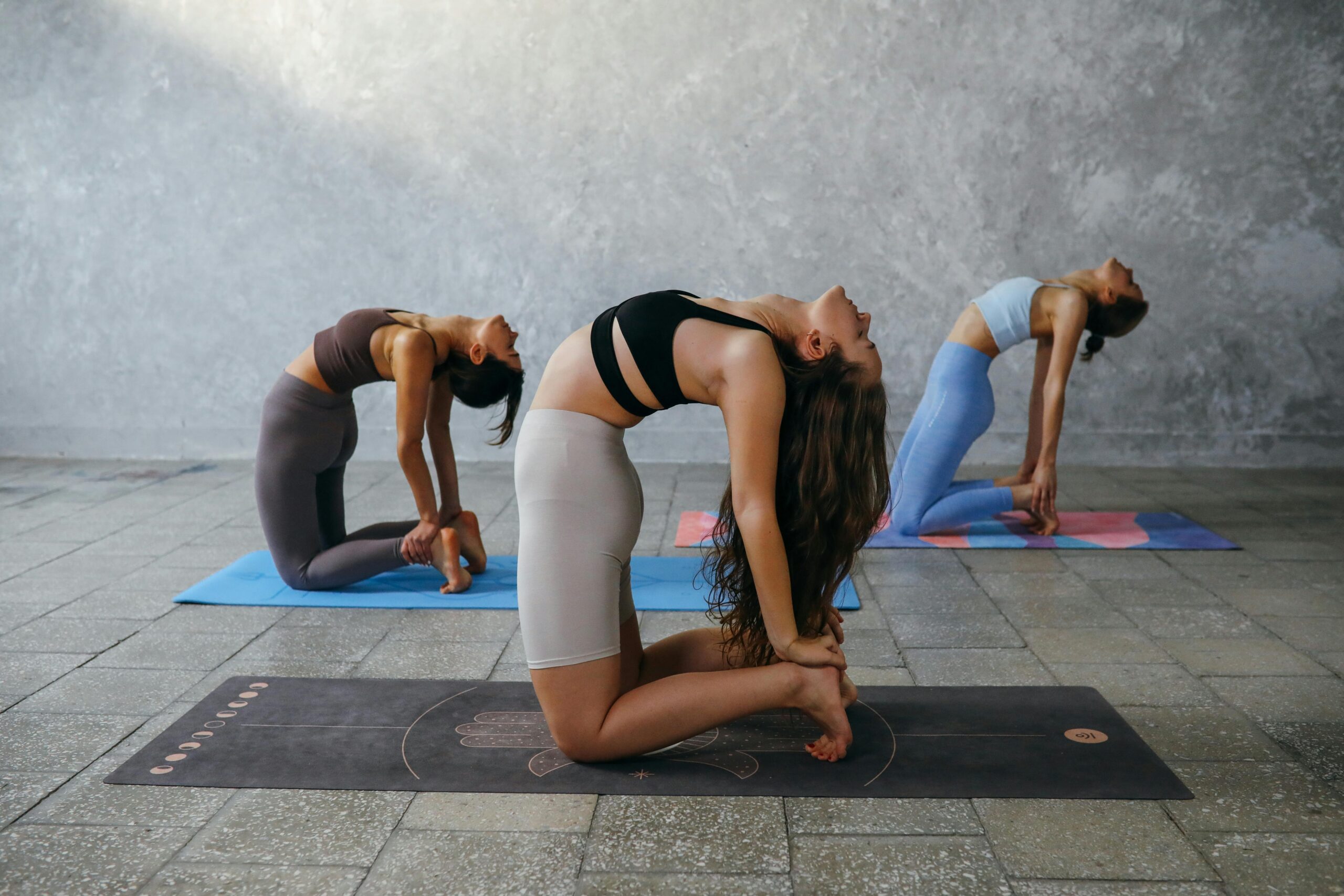
Opens the chest, stretches the hip flexors, and strengthens the back, helping reverse the postural effects of prolonged sitting.
Setu Bandhasana (Bridge Pose)
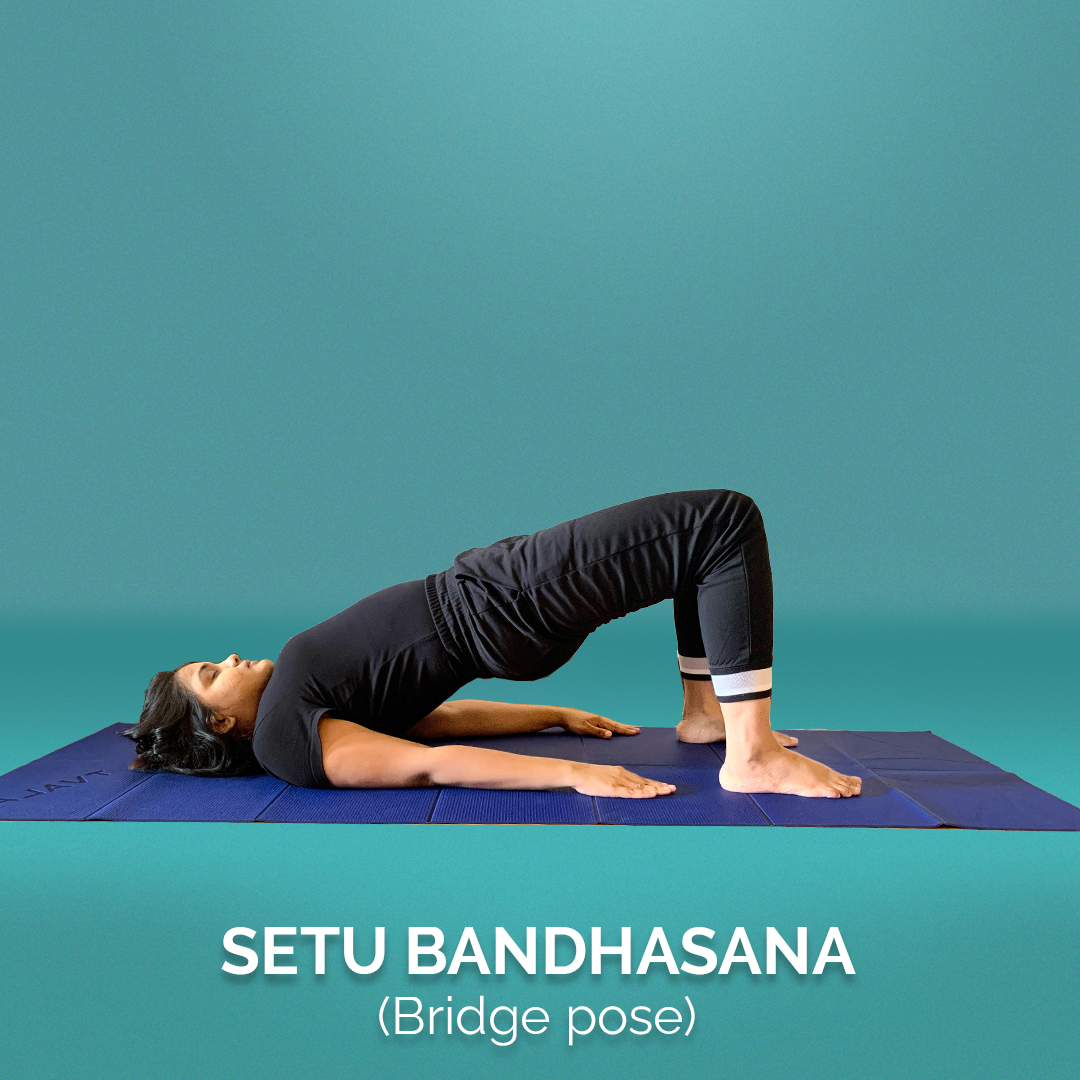
Engages the glutes and back muscles, realigning the spine and relieving lower back pain. It also stretches the hip flexors, which are often shortened from long periods of sitting.
Integrating Posture Care into Daily Life

While yoga provides a powerful foundation for posture correction, there are additional strategies to maintain good posture throughout the day:
A standing desk can be a great addition to your office space to minimize sitting.
- Ergonomics: Invest in ergonomic office furniture, including an adjustable chair, a sit-stand desk, and a monitor placed at eye level. These changes help reduce strain on the spine and promote a more upright posture.
- Frequent Movement Breaks: Set reminders to stand, stretch, and move every 30 minutes. These breaks prevent stiffness and encourage blood flow, helping you maintain flexibility.
- Posture Belts: Posture belts provide gentle support to keep your shoulders aligned, serving as a reminder to maintain good posture, particularly during extended sitting or screen time.
- Mindful Posture Checks: Throughout the day, take a moment to check your alignment. Roll your shoulders back, engage your core, and imagine lengthening your spine.
Yoga and Longevity: How Good Posture Supports Healthy Aging
Posture plays a crucial role in how we age. Maintaining proper alignment throughout life helps reduce wear and tear on our joints and muscles, allowing the body to function more efficiently. This efficiency is vital as we age because it conserves our energy, supports joint health, and minimizes the risk of falls and fractures. Yoga’s role in developing and maintaining good posture goes beyond mere alignment; it becomes a lifelong practice of self-care that builds a resilient, mobile, and balanced body, enabling us to navigate the aging process with grace and ease.
1. Joint Preservation and Arthritis Prevention
Our joints are vulnerable to degeneration, especially with poor posture and physical inactivity. Misaligned posture increases pressure on joint surfaces, accelerating cartilage wear and potentially leading to arthritis. Yoga’s emphasis on alignment ensures that our movements distribute weight evenly across joints, reducing strain and preserving cartilage health over time. In addition, yoga poses like Warrior I, Warrior II, and Tree Pose strengthen muscles around the knees and hips, creating stable joint support that prevents degeneration and protects mobility as we age.
2. Improved Balance and Fall Prevention
Falls are a leading cause of injury in older adults, often due to a lack of balance and core strength. Yoga enhances proprioception—our body’s sense of spatial orientation—by promoting balanced postures and stability exercises. Poses like Tree Pose, Warrior III, and Chair Pose build leg strength and improve balance, which lowers the risk of falls. Moreover, as we maintain awareness of our posture, we become more confident in our movements, enhancing our overall stability and agility well into older age.
3. Increased Bone Density and Osteoporosis Prevention
Weight-bearing yoga poses are particularly beneficial for bone health. Over time, bones can weaken if they aren’t regularly subjected to weight-bearing activity. Yoga poses like Downward Dog, Plank, and Warrior Poses place moderate stress on bones, which stimulates osteoblast activity (cells that build bone) and helps maintain bone density. This is especially crucial for older adults, as osteoporosis—a condition that causes bones to become brittle and fragile—is more prevalent with age. Practicing yoga regularly can, therefore, help reduce the risk of fractures and promote bone strength.
4. Enhanced Circulation and Reduced Inflammation
With age, circulation naturally slows, which can lead to poor tissue oxygenation, sluggish metabolism, and increased inflammation. Yoga promotes healthy blood flow by encouraging mindful breathing and incorporating full-body movements that engage muscles and encourage circulation. The improved blood flow nourishes tissues, flushes out toxins, and reduces inflammation, which helps prevent chronic conditions like heart disease, arthritis, and diabetes. Restorative yoga poses, such as Legs-Up-The-Wall (Viparita Karani) and Reclined Bound Angle Pose (Supta Baddha Konasana), are particularly effective for promoting circulation and relaxation, helping to manage inflammation and support cellular health.
Yoga as a Pathway to Cognitive Resilience and Mental Well-Being
The mental benefits of yoga are equally transformative, especially as they relate to aging. Yoga has a profound impact on mental clarity, emotional balance, and overall cognitive health. The benefits of yoga for posture extend far beyond physical health, impacting our resilience, adaptability, and sense of well-being.
1. Supporting Brain Health and Cognitive Function
As we age, maintaining mental sharpness becomes increasingly important. Studies indicate that exercise, especially mindful movement like yoga, improves memory, focus, and overall cognitive function. When we practice yoga with attention to alignment, breath, and mindfulness, we activate areas of the brain associated with focus, self-awareness, and motor control. This mindfulness practice trains the brain to stay present, improving cognitive flexibility and helping prevent age-related cognitive decline.
2. Emotional Balance and Stress Reduction
Posture and emotions are closely linked; a slouched posture, for instance, can trigger feelings of sadness or fatigue, while an upright posture can enhance confidence and resilience. Yoga’s focus on an open chest and aligned spine helps counteract depressive tendencies by encouraging a posture that is associated with vitality and confidence. In addition, yoga reduces stress by regulating the nervous system. The practice’s combination of movement, breathwork, and meditation activates the parasympathetic nervous system, which lowers cortisol levels and promotes a calm state. This relaxation response is essential for emotional resilience, especially as we encounter life’s changes in later years.
3. Promoting a Positive Self-Image and Social Connection
A strong, aligned posture contributes to a positive self-image. Practicing yoga builds a non-judgmental relationship with one’s body, promoting self-acceptance and confidence. Regular practice also often includes a supportive community aspect, which enhances social bonds and provides emotional support. This social dimension of yoga can be particularly valuable for older adults, helping to reduce isolation and build a sense of connection.
Expert Insights: What Physiotherapists and Orthopedic Specialists Across The World Say
Experts are increasingly concerned about the rising incidence of back issues among young adults. Research from PubMed and NCBI indicates that nearly 70% of individuals aged 20-40 experience some form of back pain, with poor posture as a significant contributor.
Dr. John Doe, an orthopedic specialist, notes, “We’re seeing a surge in young patients with cervical and lumbar issues due to prolonged periods of poor sitting posture.” Dr. Jane Smith, a physiotherapist, adds, “Yoga is invaluable for addressing postural problems. It builds core strength and instills body awareness—teaching individuals how to carry themselves better throughout the day.”
My Approach as a Yoga Teacher: Why Posture Comes First
As a yoga instructor, I frequently witness the effects of poor posture on my students. Many experience discomfort when trying to sit upright after years of slouching. Correcting posture requires time, consistency, and often a bit of humor to remind them, “Sit up straight! It’s worth it!” In my pranayama sessions, I emphasize the importance of a tall spine, which not only aids breathing but also enhances overall energy and focus.
Building a Daily Routine: Integrating Yoga and Postural Care into Everyday Life
For those new to yoga, or simply looking to integrate posture-supportive habits into daily routines, here are some practical tips:
1. Begin with Short Yoga Sessions
Start with 10-15 minute sessions, focusing on basic postures that emphasize alignment, such as Mountain Pose (Tadasana) and Cat-Cow Stretch. Gradually increase the time as your body adapts. Consistency is more important than duration; daily short practices can be more beneficial than infrequent longer sessions.
2. Incorporate Breath Awareness
Practice diaphragmatic breathing (deep belly breathing) both during and outside of yoga sessions. Breathing fully engages the diaphragm, improves oxygen flow, and helps maintain a balanced posture by relieving upper body tension. Set reminders to check your breathing throughout the day, particularly during high-stress moments.
3. Check In with Your Posture Regularly
Use posture reminders on your phone or computer to periodically check in with your alignment. Take a moment to roll your shoulders back, lengthen your spine, and engage your core muscles. These small adjustments can reinforce good posture habits over time.
4. Engage in Ergonomic Adjustments
Set up an ergonomic workspace, ensuring that your computer monitor is at eye level, your chair supports your lower back, and your feet are flat on the ground. This setup will help you maintain proper alignment and reduce the risk of strain from prolonged sitting.
5. Use Props for Added Support
Yoga props such as blocks, straps, and bolsters can enhance your practice by supporting poses that encourage good alignment. For example, a strap can help in poses that require shoulder flexibility, and a bolster can provide lumbar support during seated stretches.
6. Restorative Yoga and Evening Stretching
Before bed, practice gentle stretches or restorative yoga poses that focus on spinal decompression and muscle relaxation. Legs-Up-The-Wall Pose is excellent for calming the nervous system, while gentle twists relieve tension from the lower back. These poses help align the body and set the stage for a restful night’s sleep.
Poor posture can seem like a minor habit, but its effects on physical, emotional, and mental well-being are profound and far-reaching. When we stand tall, breathe deeply, and move with mindfulness, we invite vitality, mental clarity, and resilience into our lives. Yoga offers a transformative path to better posture, not by forcing alignment but by cultivating a harmonious relationship with our bodies and minds.
By integrating yoga and posture awareness into our daily lives, we create a foundation for health that supports us as we age, allowing us to face life’s challenges with strength, grace, and dignity. As we improve our alignment, we not only stand taller—we feel lighter, move easier, and embrace life with a renewed sense of purpose and joy.
Whether you’re young and aiming to prevent postural issues or older and seeking to restore balance, yoga’s benefits are universal and lasting. Embrace the journey, stand tall, and discover the holistic health that comes from living in alignment with body, mind, and spirit.
Disclaimer: The information provided in this article is for general purposes only and should not replace the guidance of a qualified healthcare professional. Before attempting any yoga poses that may be new to you, please make informed decisions and be aware of your body’s limitations. If you’re a beginner, it’s recommended to practice under the guidance of a certified instructor to ensure safety and proper alignment.
(This article is authored by Taarika Dave, our Holistic Life Coach, Yoga Expert, and Head of the Yoga Vertical at Team Luke.)
Need to book a one-on-one session with Taarika?
Connect with our team at consults@lukecoutinho.com.
|
From a pimple to cancer, our You Care Wellness Program helps you find a way Talk to our integrative team of experts today 18001020253 |









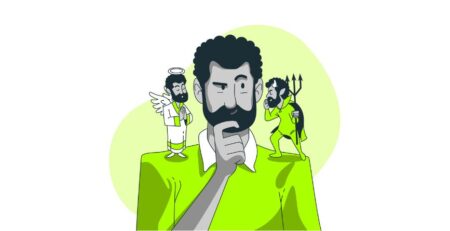
Leave a Reply